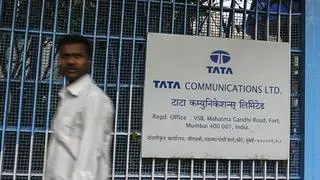Last week, we discussed how to choose between futures and options. To recap, you should prefer futures when you observe a high-probability setup on the chart with at least two-to-one reward-to-risk ratio. But what if you have a view that, say NSE 50 Index, is likely to go up, but the pattern is not a high-probability setup? That is when you should trade options. For a positive view on the underlying, you can either buy call options or short put options. This week, we discuss how to choose a call option.
Strike selection
Option is a wasting asset. This means your long position will lose value with every passing day because the right (the option) has a finite life. It is, therefore, very important that you choose your strike carefully.
It would be tempting to buy an option that has the lowest cost. But that would be inappropriate because the lowest-cost option will also have the lowest probability of becoming profitable. This does not mean you should buy a deep in-the-money option (strike price that is significantly lower than the spot price); for such an option will have a high price.
The trick then is to buy an option that has a decent probability of becoming profitable and yet not have a high price. You have to apply two rules to choose such a strike-- the implied volatility rule and the liquidity rule.
In this article, we will look at the implied volatility rule. The option valuation model (the Black-Scholes-Merton or the BSM model) uses five factors to value an option, volatility being one of them. Logically, all strikes on the same underlying for the same maturity (say December 2020) should be valued using the same underlying volatility.
To determine the volatility that market participants pay for each strike, use an online BSM calculator and input the four factors into the model: spot price, strike price, time to maturity and the risk-free rate (you can take the interest rate appropriate for the time to maturity of the option). Then, input the last traded price of the option and the calculator will show the implied volatility for that strike. This refers to the volatility that is “implied” in the actual price at which the option is traded. Note that the spot price, the time to maturity and the risk-free rate should be the same for all the strikes for which you determine the implied volatility.
Why is the market paying different volatility for each strike? When option traders prefer a particular strike, the higher demand will push up the option price relative to other strikes, resulting in a higher implied volatility for that option.
Because you should not pay too much to buy an option, you should choose a strike that has the lowest implied volatility.
Next week, we will discuss the liquidity rule, which combined with the implied volatility rule, will help you pick the option strike you should buy.
Optional reading
The time value of an option consists of time to maturity and implied volatility. The time to maturity of all strikes on the same underlying for the same maturity should be the same. So, the difference in actual time value between ITM, the ATM and OTM options is because of implied volatility. We want to pay as little as possible for the implied volatility because the time value of the option has to decline to zero at maturity.
Note that the implied volatility rule helps you choose a strike that is cheaper compared to other strikes. Because you are not determining the absolute price of an option, applying the rule will not hurt your trade even though most of the assumptions of the BSM model do hold in the real-world derivatives market.
The author offers training programmes for individuals to manage their personal investments
Looking to understand derivatives better? Send your queries to derivatives@thehindu.co.in








Comments
Comments have to be in English, and in full sentences. They cannot be abusive or personal. Please abide by our community guidelines for posting your comments.
We have migrated to a new commenting platform. If you are already a registered user of TheHindu Businessline and logged in, you may continue to engage with our articles. If you do not have an account please register and login to post comments. Users can access their older comments by logging into their accounts on Vuukle.